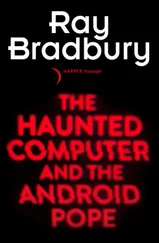Like Raster Blaster, Pinball Construction Set simulates all the elements of an old-fashioned pinball game. But the new program allows players to make their own modifications on the basic game, and to create their own games. Previously, one had to dig into the program and modify the code to change a computer game. Bill made the modification process accessible to the nonprogrammer by providing a set of software “tools” that are displayed as icons—small symbolic graphics—on the screen. At the time Bill was developing this program, Andy Hertzfeld and other friends of Bill’s at Apple were incorporating icons into the Macintosh.
If players want to pick up a bumper or a flipper, they use the joystick to move an icon that looks like a hand and touch it to the bumper or flipper. That icon is actually a tool that can pick up the bumper or flipper icon and places it where the game creator wants it to be. When the hand icon touches the flipper icon and moves it into position, part of the program’s code tells the computer’s memory that the flipper icon has been moved. By selecting different parts and putting them together in various combinations, the user/player/game builder can make an almost infinite variety of pinball games. Bill included another tool that allows users to magnify an area of the screen so that they can work on fine details.
Naturally, the program was another smash hit. It was also a sign of things to come. People who were knowledgeable about the evolution of software design began to point out that this program actually allowed the user to directly manipulate the computer’s operations without using a programming language: When the little hand icon drags the little flipper icon over to a representation of a pinball game board, the same thing is accomplished as would normally take a programmer Pages of programming code to do.
The idea of modifying a basic template is much more Palatable to most people than the prospect of designing a game (or any other complex creation) from scratch. Software construction sets can give novice computer users their first taste of the kind of power exercised by people like Bill Budge. Instead of seeing computer programming as mysterious and difficult, people are beginning to perceive it as a skill that can be easily mastered and that gives them more control over what they can do with their computer.
Program generators like Pinball Construction Set have already spawned a whole new category of stand-alone programs and tools that are included within other programs Brøderbund includes generator tools in several of its programs. Lode Runner and Spare Change, for example, are multi-level games that allow users to modify the program, thus creating their own variations once they have mastered the basic game. Other publishers are marketing programming generators in one guise or another—for learning how to read, write, and compose music, for steering a simulated Space Shuttle, and even for learning biochemistry and immunology.
As for Bill’s decision regarding a publisher for Pinball Construction Set, certainly I strongly pitched the advantages of signing up with Brøderbund. Any software publisher in his right mind would give a great deal to have a Bill Budge on board. But at the same time, a group of ex-Apple people, headed by Trip Hawkins and backed by Steve Wozniak, had decided to form a new kind of software publishing company that would be modeled on record companies, and they strongly urged Bill to join them. In effect, they told him that the success of their venture, Electronic Arts, depended on his participation. They also offered him a substantial share of the company’s ownership.
So Electronic Arts published Pinball Construction Set and started sending Bill out on tours to computer stores, printed up Bill Budge posters, and promoted him as the first software artist to become a pop star. It couldn’t happen to a more deserving person, as far as I’m concerned. As far as Bill is concerned, his apprenticeship was shoot-’em-up games, he became a journeyman with Raster Blaster, and he just started his career as a master software craftsman with Pinball Construction Set. He and a lot of others, including me, think that the world has only begun to see the effects of his unique talents.
Bill’s ambition for the near future is to create more tools that will enable other kinds of artists to do things in their own fields that they weren’t able to do before Bill Budge made it possible. “I want to help create the language for a universal medium of knowledge. I want a filmmaker like George Lucas to use my tool to create films he couldn’t have created without the program I plan to make for filmmakers. I want choreographers and playwrights and water polo players to use my tools.”
What Bill is talking about, and what program generators demonstrate, is that programming is a metaphor for controlling information. The old metaphor involved complex codes, punch cards, and giant machines, and a newer metaphor involved strange new languages and smaller machines. The program generator is a different metaphor altogether, and Bill thinks that there are still newer and more powerful metaphors to be found beyond the program generator.
“Right now, I think theater is the best metaphor for programming,” Bill claims. “That’s what I’m trying to make concrete. Alan Kay, who is one of the original visionaries of personal computer software, says that programming is a process of choreographing multiple agents. I want to figure out a way for people to do that choreography by using skills they already possess.”
I think Bill is trying to say that people understand theater far more easily than they understand mathematics. If programming arcana like procedure calls and data types, loops and stepped variables can be turned into analogies we already understand—like props and characters, scenes and sets—then the population of people who are able to understand how those elements are combined will be vastly expanded.
In the ancient days of computerdom, only the scientifically literate and the technologically obsessed were interested enough in programming to become good at it. Bill Budge is a significant member of a new generation of artists and craftsmen, thinkers and activists and dreamers—a generation that sees the advent of the computer as the opportunity to creates a new level of human culture. I think something similar must have happened back when the new technology of the printing press created a large literate population and made it possible for artists to create sonnets, politicians to draft manifestoes, and scientists to write treatises.
I know a few young programmers, and they give me good reason to suspect that Bill Budge is just one of many software artists who will make themselves known in the next three, five, or ten years. But today’s teenage programmers have at least one advantage over Bill: As a pioneer, he didn’t have any role models himself, but the up-and-coming hackers of today and tomorrow have Bill Budge and his products to emulate.
John Draper, fanatic wizard in the programming language Forth, jackpot programmer-entrepreneur, and folk hero of those technological enthusiasts called phone phreaks, is known to most of the microcomputer world as “Cap’n Software.” His involvement in the industry began in the myth-shrouded era of the homebrewers, but long before then, he and Wozniak were fellow technopranksters back when apples were still just small red fruit that grew on trees. He’s cherished by many as a stubborn, independent, free spirit in a software market increasingly dominated by large teams of programmers. To others, however, “cherished” might not be the best word to describe their feelings about John Draper. Ask around the industry and you’ll collect some strong and often less than favorable opinions when you mention his name.
Читать дальше










